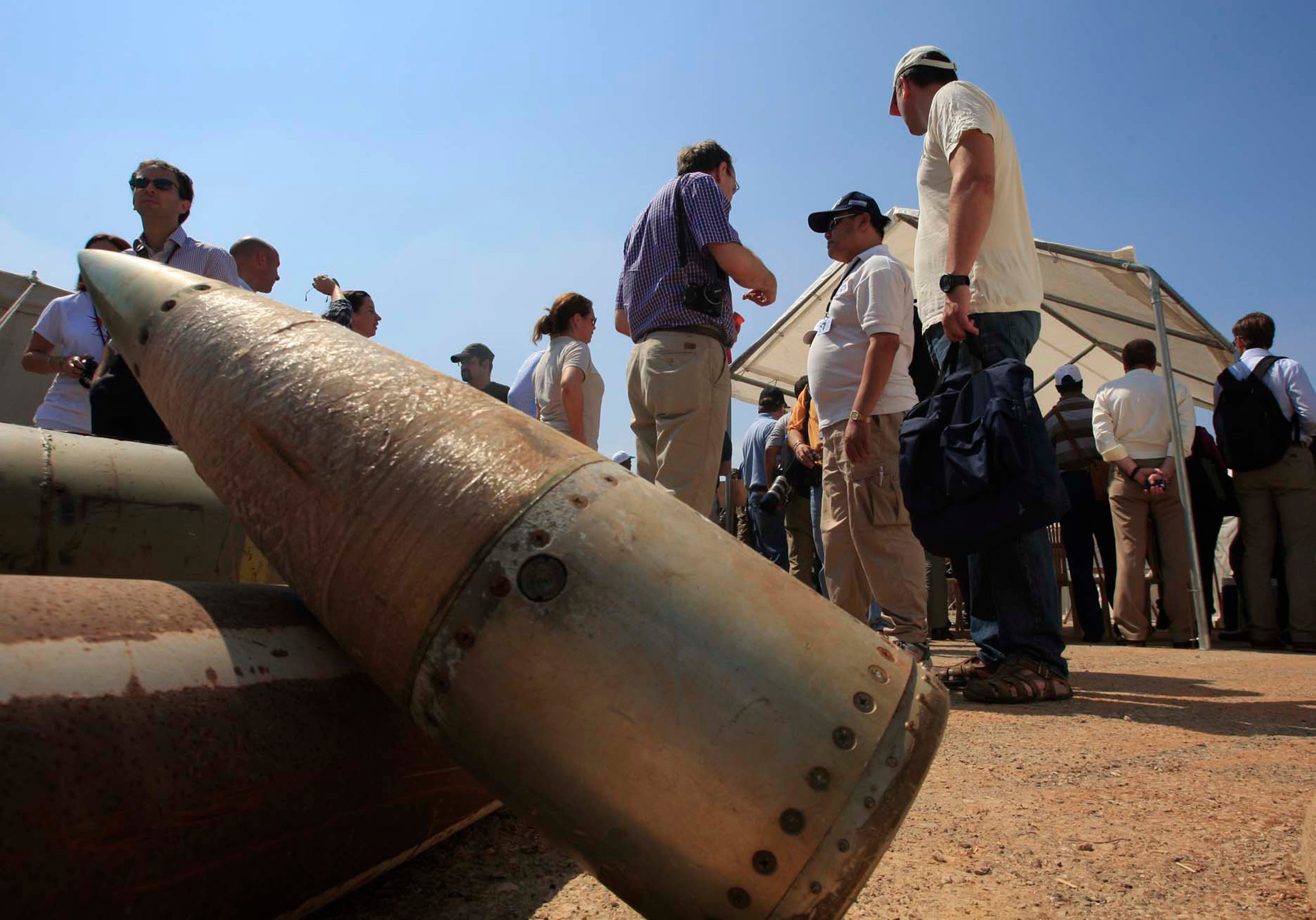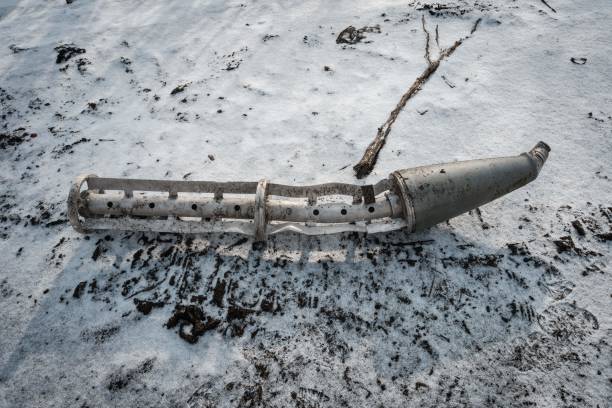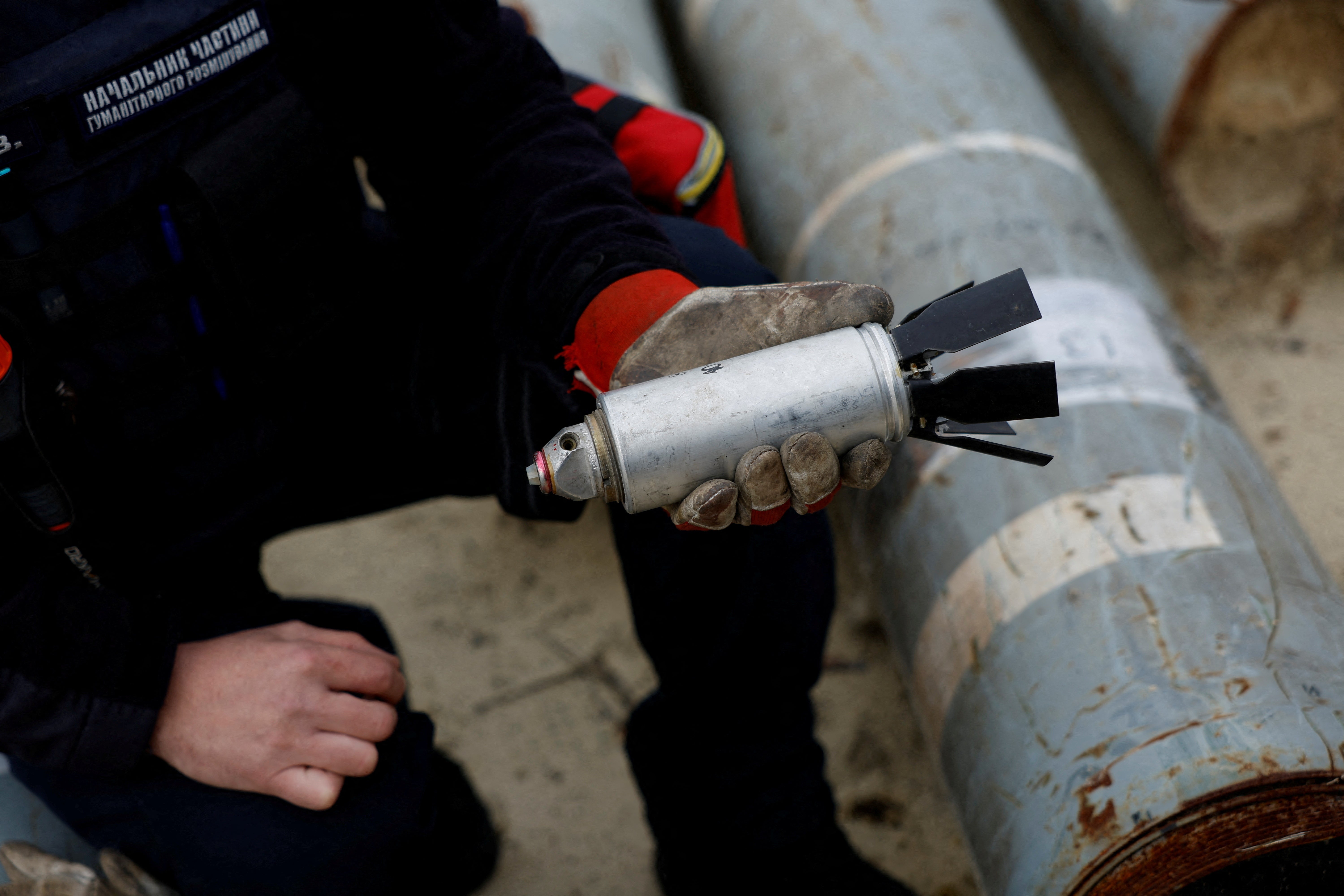What are cluster bombs and why are they banned in some countries?
The US has sent the weapons to Ukraine – even as human rights groups oppose their use
Your support helps us to tell the story
From reproductive rights to climate change to Big Tech, The Independent is on the ground when the story is developing. Whether it's investigating the financials of Elon Musk's pro-Trump PAC or producing our latest documentary, 'The A Word', which shines a light on the American women fighting for reproductive rights, we know how important it is to parse out the facts from the messaging.
At such a critical moment in US history, we need reporters on the ground. Your donation allows us to keep sending journalists to speak to both sides of the story.
The Independent is trusted by Americans across the entire political spectrum. And unlike many other quality news outlets, we choose not to lock Americans out of our reporting and analysis with paywalls. We believe quality journalism should be available to everyone, paid for by those who can afford it.
Your support makes all the difference.Cluster bombs have been banned by more than 120 countries, with many allies and humanitarian groups also opposing the use of the bomb.
The weapon does not violate international law when used on the battlefield, but any use in populated areas is considered a war crime.
Earlier this year, Ukraine welcomed the Biden administration’s decision to provide the weapon and said it needed “weapons, more weapons, and more weapons, including cluster munitions” if it is to defeat Russia.

Over the past few days, fierce fighting has been taking place in and around Urozhaine and Staromaiorske and according to reports Vladimir Putin’s soldiers have been seen fleeing the US-supplied cluster munitions.
Footage released by the Ukrainian defence ministry shows the cluster bombs hitting Russian forces amid Kyiv’s recapturing of Urozhaine in the Donetsk region.
“Urozhaine liberated,” Hanna Maliar, Kyiv’s deputy defence minister said on Telegram. “Our defenders are entrenched on the outskirts.”
Cluster bombs typically release large numbers of smaller bomblets that can kill at random, over a large area and those that fail to explode can be a danger for years to come.
Here is a look at what cluster munitions are, why they are so controversial and where they have been used.
What is a cluster munition?
A cluster munition is a bomb that opens in the air and releases smaller “bomblets” across a wide area. The bomblets are designed to take out tanks and equipment, as well as troops, hitting multiple targets at the same time.
The munitions are launched by the same artillery weapons that Western allies have already provided to Ukraine for the war — such as howitzers — and the type of cluster munition that the US is sending is based on a common 155 mm shell that is already widely in use across the battlefield.

Why are they so controversial?
In previous conflicts, cluster munitions have had a high dud rate, which meant that thousands of the smaller unexploded bomblets remained behind and killed and maimed people decades later. The US last used its cluster munitions in battle in Iraq in 2003, and decided not to continue using them as the conflict shifted to more urban environments with more dense civilian populations.
Brigadier General Pat Ryder – the Pentagon press secretary – said the US Defense Department has “multiple variants” of the munitions and “the ones that we are considering providing would not include older variants with [unexploding] rates that are higher than 2.35 per cent”.
A convention banning the use of cluster bombs has been joined by more than 120 countries, which agreed not to use, produce, transfer, or stockpile the weapons and to clear them after they've been used. The US, Russia and Ukraine haven't signed on.
Why provide them now?
For more than a year the US has dipped into its own stocks of traditional 155 howitzer munitions and sent more than two million rounds to Ukraine. Allies across the globe, including the UK, have provided hundreds of thousands more.
A 155 mm round can strike targets 15 to 20 miles (24 to 32 kilometres) away, making them a munition of choice for Ukrainian ground troops trying to hit enemy targets from a distance. Ukrainian forces are burning through thousands of rounds a day battling the Russians.
Yehor Cherniev, a member of the Ukrainian parliament, told reporters at a German Marshall Fund event in the US that Kyiv would likely need to fire 7,000 to 9,000 rounds daily during the intensified counteroffensive. Providing that many puts substantial pressure on US and allied stocks.
The cluster bomb can destroy more targets with fewer rounds, and since the US hasn’t used them in conflict since Iraq, it has large amounts of them in storage it can access quickly, said Ryan Brobst, a research analyst for the Foundation for Defense of Democracies.

A March 2023 letter from top House and Senate Republicans to the Biden administration said the US may have as many as three million cluster munitions available for use, and urged the White House to send the munitions to alleviate pressure on American war supplies.
“Cluster munitions are more effective than unitary artillery shells because they inflict damage over a wider area,” Mr Brobst said. “This is important for Ukraine as they try to clear heavily fortified Russian positions.”
Tapping into the US stores of cluster munitions could address Ukraine’s shell shortage and alleviate pressure on the 155 mm stockpiles in the US and elsewhere, Mr Brobst said.
Is using cluster bombs a war crime?
The use of cluster bombs itself does not violate international law, but using them against civilians can be a violation. As in any strike, determining a war crime requires looking at whether the target was legitimate and if precautions were taken to avoid civilian casualties.
“The part of international law where this starts playing [a role], though, is indiscriminate attacks targeting civilians,” Human Rights Watch’s associate arms director Mark Hiznay said. “So that's not necessarily related to the weapons, but the way the weapons are used.”
Where have cluster bombs been used?
The bombs have been deployed in many recent conflicts.
The US initially considered cluster bombs an integral part of its arsenal during the invasion of Afghanistan that began in 2001, according to Human Rights Watch (HRW). The group estimated that the US-led coalition dropped more than 1,500 cluster bombs in Afghanistan during the first three years of the conflict.
The Defense Department had been due to stop use of any cluster munitions with a rate of unexploded ordnance greater than 1 per cent, by 2019. But the Trump administration rolled back that policy, allowing commanders to approve the use of such munitions.
Syrian government troops have often used cluster munitions — supplied by Russia — against opposition strongholds during that country’s civil war, frequently hitting civilian targets and infrastructure. And Israel used them in civilian areas in south Lebanon, including during the 1982 invasion.

During the month-long 2006 war with Hezbollah, HRW and the United Nations accused Israel of firing as many as four million cluster munitions into Lebanon. That left unexploded ordnance that threatens Lebanese civilians to this day.
The Saudi-led coalition in Yemen has been criticized for its use of cluster bombs in the war with the Iran-backed Houthi rebels that has ravaged the southern Arabian country.
In 2017, Yemen was the second deadliest country for cluster munitions after Syria, according to the UN. Children have been killed or maimed long after the munitions originally fell, making it difficult to know the true toll.
In the 1980s, the Russians made heavy use of cluster bombs during their 10-year invasion of Afghanistan. As a result of decades of war, the Afghan countryside remains one of the most heavily mined areas in the world.
Which countries have banned the cluster bomb?
The Convention on Cluster Munitions is an international treaty of more than 100 states which prohibits all use, production, transfer and stockpiling of cluster munitions.
The Convention was first adopted on 30 May 2008 in Dublin by 107 States and signed in Oslo on 3 December the same year, according to its official website.
It soon became binding international law when it entered into force on 1 August 2010 and so far, there have been a total of 123 States which have joined the Convention – 111 States Parties and 12 Signatories.
Italy, Spain, Germany and the UK are among the NATO members who have expressed opposition to the use of cluster bombs.
The full of countries can be found here.
The Associated Press contributed to this report


Join our commenting forum
Join thought-provoking conversations, follow other Independent readers and see their replies
0Comments